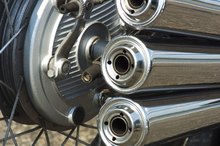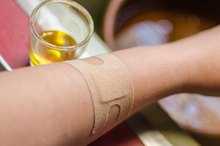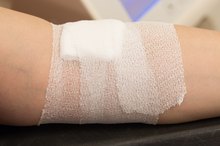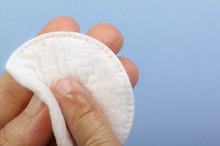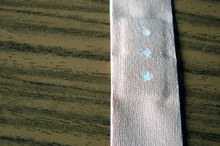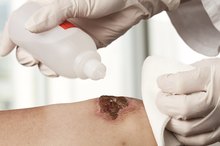How to Treat a Kitchen Burn
A kitchen burn from steam, hot liquids or direct contact with the burner or pot may be mild or severe. A first-degree burn does not blister the skin, according to University of Utah's Hospital Burn Center. Second-degree burns blister, while third-degree burns blister and burn all the way down to the muscles and bone. A critical burn includes any burn covering a large area of the body or a burn all the way down to the bone. If the victim has a third degree burn, or is over 60 years old, call for medical assistance.
Tell the victim that you are trained in first aid and get his permission to give care 2. Remove the victim from the source of the heat to stop the burning.
How to Treat Burns Caused by Boiling Water
Learn More
Apply cold running water, not ice-water, to cool a first or second degree burn; ice-water increases body heat loss and damages affected tissues. Cover the area with cool, damp cloths instead of immersing the area with water if it is a second or third degree burn covering a large area, according to MayoClinic.com; immersion could cause a steep drop in body temperature and blood pressure.
Continue to treat the burn with cold water until the victim’s pain goes away. Give the victim of a minor burn an over-the-counter pain reliever such as Advil or Motrin, according to MayoClinic.com.
How to Treat a Burn Bubble
Learn More
Put on sterile gloves then dry the burn gently with a sterile dressing. Refrain from breaking any blisters, preventing unnecessary infection.
Place a sterile dressing loosely over the burn to keep air out, prevent infection and protect the skin. Tape the edges of the dressing with first aid tape 2. Do not remove any clothing that sticks to the victim’s skin, minimizing further damage to the burned area.
Get immediate medical help if the kitchen burn was on the head, neck, face, hands, feet or genitals, warns the American Red Cross. Check for signs of breathing and circulation and be prepared to give CPR for a major burn.
Tips
Observe the burned victim for signs of shock including a change in consciousness, nausea or vomiting, rapid breathing, rapid pulse and excessive thirst. If you suspect the victim has gone into shock, call 911 immediately, have the victim lie down and elevate the victim's legs about 12 inches.
Warnings
Do not use ointment or butter for second or third degree burns; these substances seal in heat and may cause infection. If there is no sterile dressing available, use a clean cloth with little to no lint because lint could get into the burned area.
Related Articles
References
- “First Aid/CPR/AED for Schools and the Community”; American Red Cross; 2006
- The Mayo Clinic: Burns First Aid
- Knowlin, L., Stanford, L., Moore, D., Cairns, B., & Charles, A. (2016). The Measured Effect Magnitude of Co-Morbidities on Burn injury Mortality. Burns : Journal of the International Society for Burn Injuries, 42(7), 1433–1438. http://doi.org/10.1016/j.burns.2016.03.007
- Hilton G. Thermal Burns: The ABCs are crucial, since the major threat is often inhalation injury. Am J Nurs. 2001;101(11):32-34. doi:10.1097/00000446-200111000-00017
- Cleveland Clinic. Burns. Updated August 31, 2017.
- Thom D. Appraising current methods for preclinical calculation of burn size - A pre-hospital perspective. Burns. 2017;43(1):127-136. doi: 10.1016/j.burns.2016.07.003.
- Knowlin, L., Stanford, L., Moore, D., Cairns, B., & Charles, A. (2016). The Measured Effect Magnitude of Co-Morbidities on Burn injury Mortality. Burns : Journal of the International Society for Burn Injuries, 42(7), 1433–1438.
Resources
Writer Bio
Paula Quinene is an Expert/Talent, Writer and Content Evaluator for Demand Media, with more than 1,500 articles published primarily in health, fitness and nutrition. She has been an avid weight trainer and runner since 1988. She has worked in the fitness industry since 1990. She graduated with a Bachelor's in exercise science from the University of Oregon and continues to train clients as an ACSM-Certified Health Fitness Specialist.


